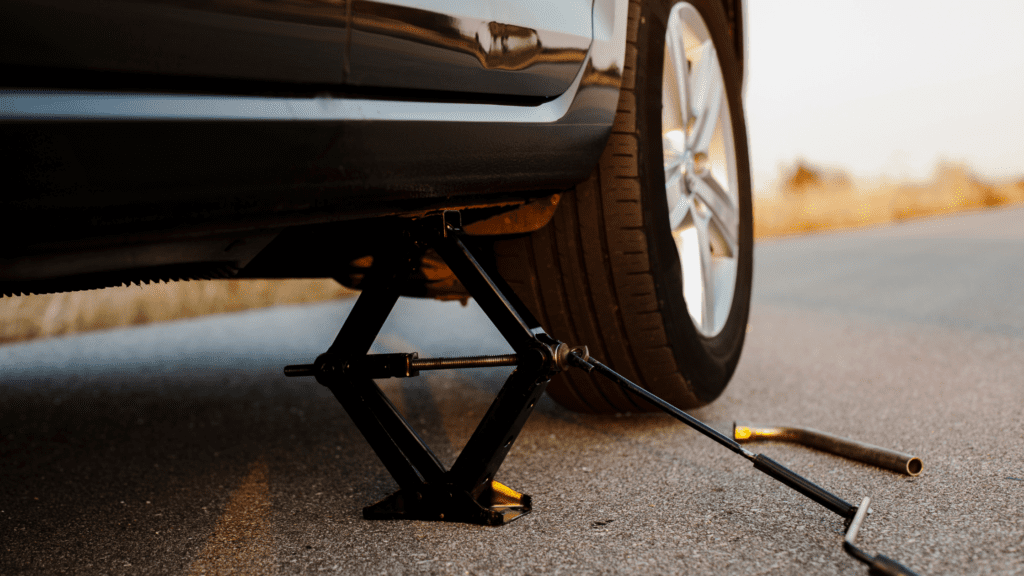How Often and Why to Rotate Your Car Tires

When it comes to maintaining your car, certain tasks like oil changes, brake checks, and regular servicing may immediately come to mind. However, there’s another crucial aspect of vehicle maintenance that often gets overlooked – tire rotation. Although it might seem like a minor detail, regular tire rotation can significantly impact your car’s performance, safety, and longevity.
In this guide, we’ll delve into the importance of rotating your car tires, how often you should do it, and the signs that indicate it’s time for a rotation. Understanding the necessity of tire rotation can help you maintain your vehicle in top condition, ensuring smoother rides and safer journeys. So buckle up and let’s get rolling!
The Importance of Tire Rotation
Tire rotation might seem like an unnecessary chore, but its role in maintaining even tire wear is crucial. When you neglect to rotate your tires, they wear unevenly. This uneven wear can have a significant impact on your car’s performance, handling, and most importantly, safety.
Uneven tire wear can lead to a host of problems, including:
- Reduced grip and traction, increasing the risk of accidents
- Poorer handling, making the vehicle harder to control
- Increased tire noise and vibration, reducing ride comfort
These issues not only compromise your driving experience but also pose serious safety risks. Hence, regular tire rotations are necessary to ensure even tire wear and maintain optimal vehicle performance.
Factors Influencing Tire Rotation Frequency
While it’s essential to rotate your tires regularly, the frequency of rotation isn’t a one-size-fits-all scenario. Several factors can influence how often you should be rotating your tires, and understanding these can help you tailor a maintenance schedule that best suits your vehicle and driving habits.
Front-Wheel Drive vs. Rear-Wheel Drive
The type of drivetrain your vehicle has plays a significant role in determining how often to rotate tires. Front-wheel drive (FWD) and rear-wheel drive (RWD) vehicles distribute power differently, which affects tire wear patterns.
For instance, FWD vehicles tend to wear out the front tires faster, as they carry the engine’s weight and handle both steering and propulsion. Meanwhile, RWD vehicles may experience more even wear, although the rear tires still bear the brunt of the power delivery.
Weight Distribution and Driving Habits
Your driving habits and the weight distribution of your vehicle also have a significant impact on tire wear:
- Frequent acceleration and hard braking can cause rapid wear on the front tires
- Regular cornering, especially at high speeds, wears out the outer edges of the tires
- Heavier vehicles or those loaded with heavy cargo can wear out tires faster due to increased pressure.
Understanding how your driving habits and your vehicle’s weight distribution affect tire wear can help you better anticipate the need for tire rotation, ensuring optimal performance and longevity of your tires.
Manufacturer Recommendations
Another crucial factor in determining how often to rotate tires is your vehicle manufacturer’s recommendations. These guidelines, found in your owner’s manual, take into account the specifics of your vehicle model, including its drivetrain type, weight distribution, and typical driving conditions.
Recommended Tire Rotation Intervals
For most vehicles, rotating the tires every 5,000 to 8,000 miles is a good rule of thumb. This interval ensures that tire wear remains even, enhancing your car’s performance and safety. Consistent tire rotation at this frequency can help you avoid premature tire replacement, saving you money in the long run.
By comprehending these factors and maintaining a regular rotation schedule, you can ensure even tire wear, improved vehicle performance, enhanced safety, and avoid unnecessary financial expenses from premature tire replacement.
The Benefits of Regular Tire Rotation
Tire rotation often gets overlooked, yet it plays a vital role in enhancing your car’s performance and longevity. Here are the benefits of regular tire rotation and why this simple act is an integral part of maintaining your vehicle:
Prolonged Tire Life
Regular tire rotation helps to extend the life of your tires. By ensuring that the wear is distributed evenly across all four tires, you can prevent premature tire replacement and maximize your tire investment.
Improved Handling and Performance
Uneven tire wear can lead to poor vehicle handling and reduced performance. By rotating your tires regularly, you maintain optimal tread depth on all four tires, enhancing your vehicle’s grip, traction, and overall performance.
Enhanced Fuel Efficiency
Did you know that uneven tire wear can negatively impact your fuel efficiency? Worn-out tires require more power to move, leading to higher fuel consumption. Regular tire rotations can help maintain your vehicle’s fuel efficiency by ensuring even tire wear.
Safer Driving
The most important benefit of regular tire rotation is safer driving. Well-maintained tires with even wear offer better traction and handling, reducing the risk of accidents. Plus, regular tire inspections during rotation services can help identify potential issues before they become serious problems.
Regular tire rotation is not just a recommendation, but a necessity for every vehicle owner. It extends tire life, improves vehicle performance, enhances fuel efficiency, and most importantly, contributes significantly to safer driving by ensuring even wear and timely identification of potential tire issues.
Frequently Asked Questions
How Often Should You Rotate Your Tires?
The frequency of tire rotation can depend on several factors, including your vehicle type, driving habits, and the kind of tires you have. However, as a general rule of thumb, most manufacturers recommend rotating your tires every 5,000 to 7,500 miles. Be sure to check your vehicle’s owner manual for specific recommendations.
How to Know If Your Tires Need Rotation?
While following the manufacturer’s recommended intervals is a good practice, it’s also essential to keep an eye out for signs that your tires may need rotation. Here are a few symptoms to watch out for:
- Uneven tire wear: This is the most obvious sign. If you notice that some tires are wearing out faster than others, it’s time for a rotation.
- Vibration: If you feel a vibration in your steering wheel, particularly at high speeds, it could be a sign of uneven tire wear.
- Noise: Unusual noise or humming coming from the tires can also indicate a need for rotation.
Rotating tires may appear minor, yet it is crucial in preserving your automobile’s performance and safety. Regular tire rotations contribute to a seamless and secure journey, while also optimizing the value of your tire investment. If you are uncertain about the appropriate time to rotate your tires or how exactly to go about it, seeking professional guidance is highly recommended.
What Happens During a Tire Rotation?
In a tire rotation process, every tire and wheel on your vehicle is detached and relocated to a distinct place. This practice guarantees uniform wear across all tires, thereby extending their lifespan. Here’s an uncomplicated explanation of the procedure:
- The tires at the front are shifted to the back, while the back tires are transferred to the front.
- Based on whether your vehicle operates on front, rear, or all-wheel drive, there might also be a side-to-side swapping of the tires.
Can You Do It Yourself?
Yes, with the right tools and knowledge, you can rotate your own tires. However, it’s important to remember that incorrect tire rotation can lead to uneven tire wear.
If you’re not confident about rotating your own tires or simply prefer the convenience of professional service, HEART Auto Care in Chicago is here to help. Our skilled technicians are equipped with the necessary expertise to carry out tire rotation efficiently and correctly, ensuring your safety and enhancing your vehicle’s performance. Visit us at HEART Auto Care for all your tire rotation needs.
How Often To Rotate Tires: A Conclusion
Regular tire rotation is a critical aspect of vehicle maintenance. Not only does it prolong the lifespan of your tires, but it also improves your vehicle’s handling, performance, and fuel efficiency – all while ensuring safer driving.
So don’t wait until your tires are worn out. Follow your manufacturer’s recommended tire rotation intervals, and consider consulting professional tire rotation services for optimal results. Remember, when it comes to tire rotation, an ounce of prevention is worth a pound of cure. Drive safe!






